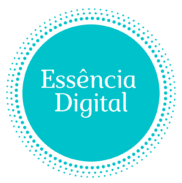In a digital world saturated with noise, visual clutter, and a desperate fight for attention, the most powerful statement you can make is often the quietest. For creative professionals, a minimalist portfolio isn’t about having less; it’s about making what you have matter more. It’s a design philosophy built on confidence, clarity, and the conviction that your work is strong enough to stand on its own.
Minimalism isn’t a lack of design; it is the ultimate form of disciplined, intentional design. It strips away the non-essential to create a focused, sophisticated, and unforgettable user experience. This guide explores the principles and strategies behind crafting a minimal portfolio that feels confident, not empty.
The Philosophy of Subtraction: Putting Your Work on a Pedestal
The primary function of your portfolio is to showcase your work in the best possible light. Think of your portfolio’s design as a modern art gallery. A masterpiece isn’t displayed in a cluttered room with loud wallpaper; it’s given a clean wall, perfect lighting, and ample space to be appreciated. Your design should be that clean wall.
A minimalist layout achieves this by ruthlessly removing distractions.
- No complex animations that compete for attention.
- No overwhelming color palettes that clash with your project visuals.
- No cluttered sidebars filled with non-essential information.
The goal is to subtract every element that doesn’t directly support and elevate the work itself. This puts all the focus where it belongs: on the quality and story of your projects.
The Power of Typography: Creating Hierarchy with Restraint
In a minimal design, typography is not just for reading; it becomes a primary graphic element. It is one of the most powerful tools you have to create structure, personality, and elegance without adding clutter.
The key is restraint. Stick to a maximum of two font families.
- Choose a “Workhorse” Sans-Serif: Select a clean, highly readable, and versatile font like Inter, Lato, or Poppins for your body copy and subheadings. It should be legible at small sizes and have multiple weights (light, regular, bold).
- Choose a “Character” Font (Optional): For your main headlines, you can select a font with more personality to add a touch of your brand’s style. This could be an elegant serif like Playfair Display or Lora, or a distinctive sans-serif.
Create all the necessary visual hierarchy not by adding more fonts, but by skillfully using variations in size, weight, and spacing.
Intentional Color: Using Color as a Surgical Tool
Color is powerful, but its power is diluted with overuse. A minimalist approach treats color as a surgical tool, to be used with precision and purpose.
Create a simple, refined color palette:
- A Dominant Neutral: The background of your portfolio should be a calm neutral. This doesn’t have to be pure white; off-white (#F8F8F8), light gray, or even a sophisticated dark gray can work beautifully.
- A High-Contrast Text Color: For readability, your main text color should have a high contrast with your background (e.g., a near-black like #111111 on a light background).
- One Signature Accent Color: This is the most important choice. Select a single, bold color that reflects your personal brand. Use this color sparingly for key elements like call-to-action buttons, links, and hover effects. In a neutral design, this single splash of color has immense impact.
The “Hero” Image: Every Visual Must Be Exceptional
In a minimalist design, there is nowhere for mediocre visuals to hide. Because there are fewer elements on the page, each one carries more visual weight. This means every image, mockup, and graphic must be of the absolute highest quality.
- Curate a Stunning “Hero” Image: For each project thumbnail on your main portfolio page, select a single, compelling “hero” image that is visually arresting and represents the project’s essence. This is what will entice a visitor to click and learn more.
- Use Professional Mockups: Display your work in a realistic context. Use high-quality mockups to show your app designs on a phone, your branding on packaging, or your website design on a laptop.
- Optimize for Performance: A slow-loading website feels unprofessional and clunky. Use tools like TinyPNG or ImageOptim to compress your images without sacrificing visible quality.
The Invisible Grid: Structuring with Space and Alignment
Minimal design is not random or empty; it is hyper-organized. The sense of calm and order in a great minimal design comes from an underlying, invisible grid system.
A grid dictates the alignment and spacing of all your elements, creating a predictable and pleasing rhythm.
- Establish Consistent Margins and Padding: Ensure the space around your text blocks, between your images, and at the edges of your page is consistent.
- Align Everything: Every element should be intentionally aligned with another. The left edge of your headline should align with the left edge of your paragraph text. Your project grid should have uniform spacing.
This strict adherence to an underlying structure is what gives minimalism its sophisticated, architectural feel.
Conclusion: Confidence Through Clarity
Ultimately, a minimalist portfolio is a statement of confidence. It says that you believe your work is so strong that it doesn’t need to be dressed up with distracting flair. It communicates that you are a professional who values clarity, focus, and substance over superficial decoration.
In a noisy digital world, simplicity is a powerful way to cut through the clutter and make your work unforgettable. By embracing the principles of subtraction, restraint, and intentionality, you can create a portfolio that doesn’t just look good—it feels intelligent, respectful, and deeply professional.

